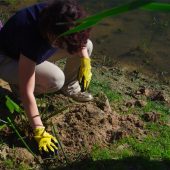
Anthropogenically-induced water quality issues are plaguing the people and environments of Southwest Florida. In 2018, nutrient-rich runoff into waterways caused one of the largest and longest occurring algal blooms in the area; however, many were unaware or misinformed about the causes or impacts of these blooms. Young people are at the forefront of this changing environment and will continue to face water reliance issues in the years to come (Leal, et al., 2015). However, gaps within the existing science curriculum do not address the anthropogenic actions that are leading to these crises (National Research Council, 2012). Southwest Florida is being drastically altered by the large number of people who move to the area each year; urban sprawl, habitat loss, and human-induced climate change are impacting the region (McVoy, et al. 2011). Local water quality issues necessitate a more focused, specific effort to build awareness and knowledge to ensure clean and safe water is locally available. Therefore, the need for Environmental Education (EE) is becoming increasingly important for students to be able to make informed decisions about personal actions contributing to these issues. The project, Future Leaders of Water Quality (FLOW) focused on educating teachers and students by engaging them in environmental literacy, specifically focused on water quality education in local middle schools. Project FLOW worked with local teachers to develop an innovative, five-day, lesson plan focused on the causes and implications of anthropogenically-induced eutrophic conditions. Data were collected throughout the implementation to measure the impact of the curriculum intervention that addressed water quality issues of the region. The results of the study suggest exposure to the lessons increased student understanding of water quality issues and motivated students to take personal action to improve water resiliency within their local communities.
Continue Reading